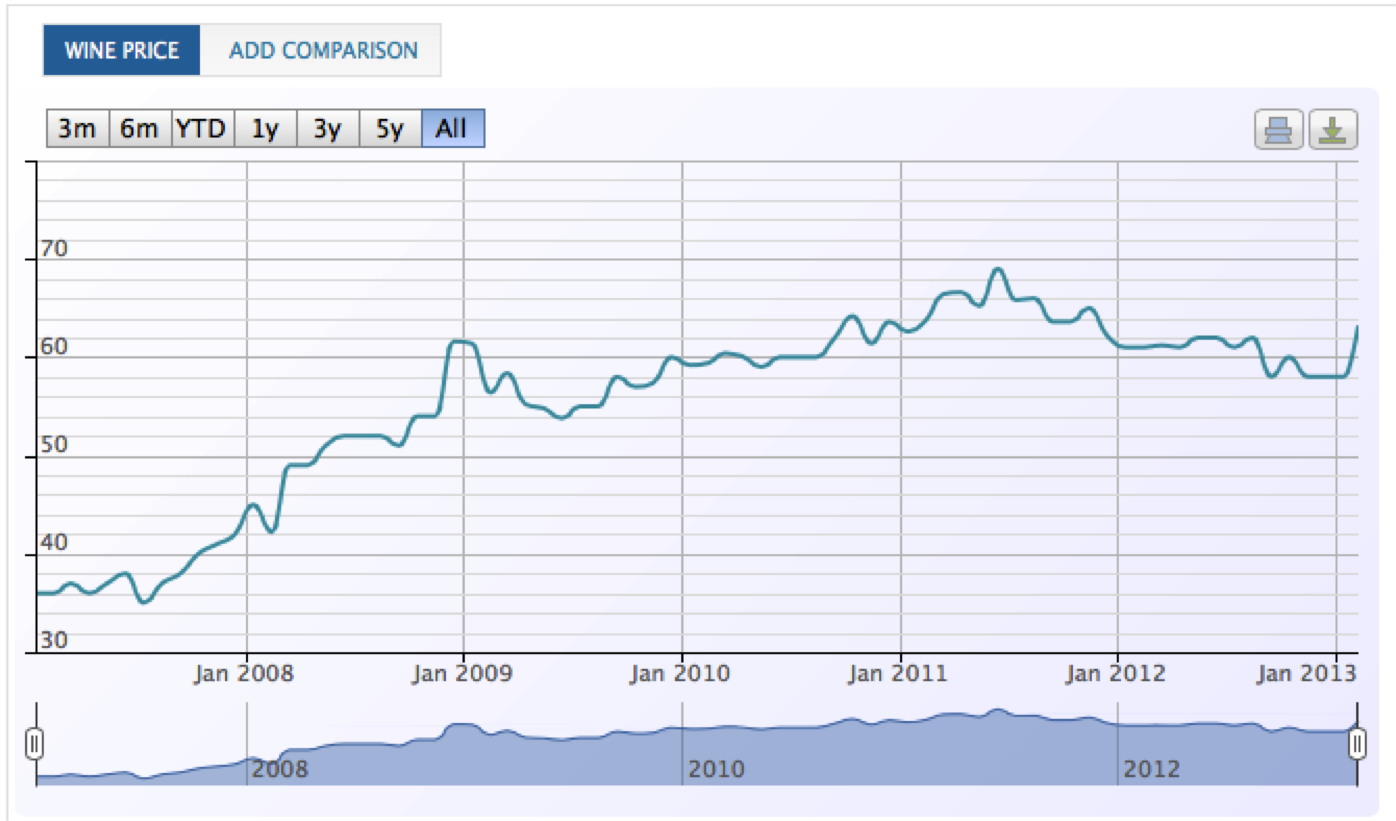by Wine Owners
Posted on 2013-03-25
Thank you everyone who's been using our fine wine asset management and trading exchange since November 2012 when it first released.
As a result of all our fantastic feedback, we've just released a brilliant new version, providing quick answers to questions such as:
- how much have I spent to date;
- what’s a wine honestly worth if I wanted to sell it tomorrow; how have my wines performed;
- what should I drink now or drink up;
- what do I have too much of and what should I think of selling next to make room for what I’d like to buy next?
With this new release, Wine Owners provides answers to all those fundamental questions and a lot more besides, and is available now via complimentary subscription here.
by Wine Owners
Posted on 2013-02-17
We're being asked increasingly how Wine Owners arrives at its Market Level pricing, helping to provide a benchmark for real-world valuation of wine collections for its private client users.
So here's how we process millions of data points to give our users pricing insight on their fine wine collections that they can translate into estimates of realisable current market value, less sales commissions.
The source of data comes from WineSearcher, the world's pre-eminent search engine for fine wine, helping wine enthusiasts everywhere to source wines they wish to buy from retailers.
Retail pricing is collected from over 34,000 wine merchants and traders around the world, and this data can be analysed by country and region.

WineSearcher's scope of work is huge, processing millions of data points on wines that are for sale or just sold every day.
How does Wine Owners work with this primary data source?
Our proprietary algorithms process this data to eliminate the inevitable anomalies that such large data sets present. We focus on pricing for the world's top 250,000 fine wines.
For our private client members who appreciate, collect and invest in the fine wine top end of the market, our focus on a specific strata of fine wine pricing enables us to structure, standardise, format, analyse and process these wines in great depth.
How does Wine Owners calculate the Market Level?
We first exclude possible outliers from the source data.
Next we recognise the different liquidity characteristics of the fine wine market and assign a liquisity score to each wine in our database.
Rare wines, old vintages and other wines with limited liquidity are treated differently to incoming streams for top Bordeaux where there is substantial relative market availability and demand.
We then analyse the spread between market low and mid point for each wine and calculate the point between the two, depending on liquidity scores, that constitutes the Market Level.
Our proprietary algorithms are designed to give you the most consistent approach to pricing a market in wine.
Of course, wine is a collectable asset very unlike stocks and shares or gold, and therefore market prices reflect differences in geographical availability and tax status, not to mention condition and history (the essential elements of 'provenance'. What that means is that pricing fine wine is not a wholly scientific process, and a consistent approach such as ours will not capture every market discontinuity. Nevertheless Wine Owners offers users a rigorous approach to calculating Market Level pricing, being a likely pricing level at which your wines can sell without undue delay.
The following price graph, a new version of the existing functionality on https://www.wineowners.com , illustrates the pricing information and interactive site tools you can use to manage your wine collection.

We value based on the market retail value, and therefore you can expect to deduct selling commissions from this price.

